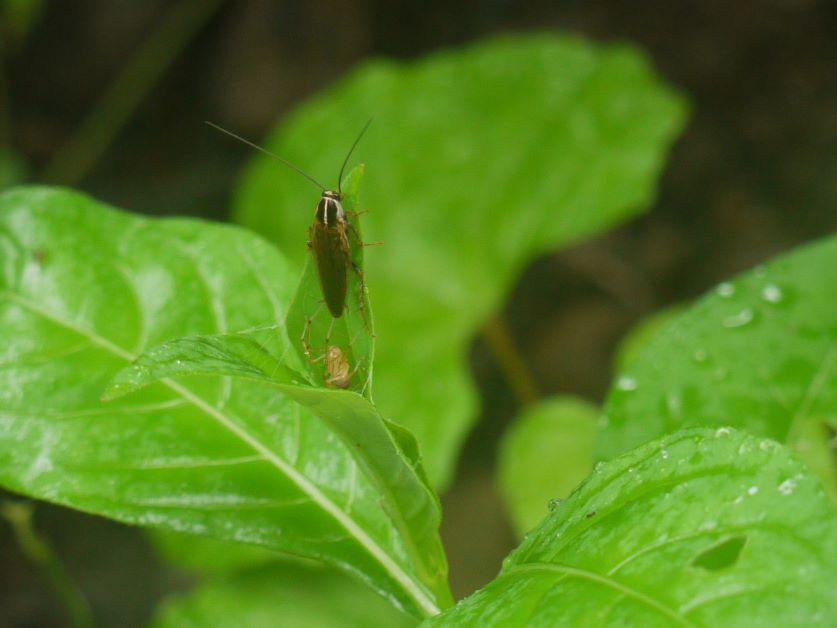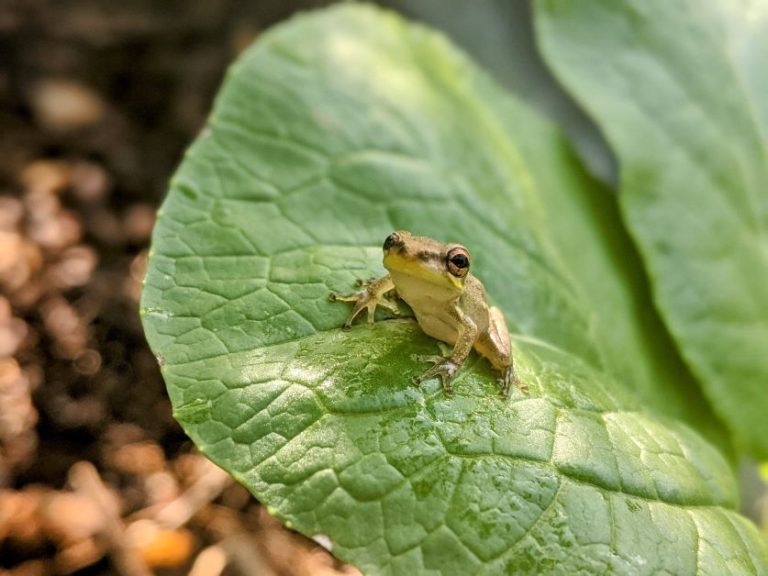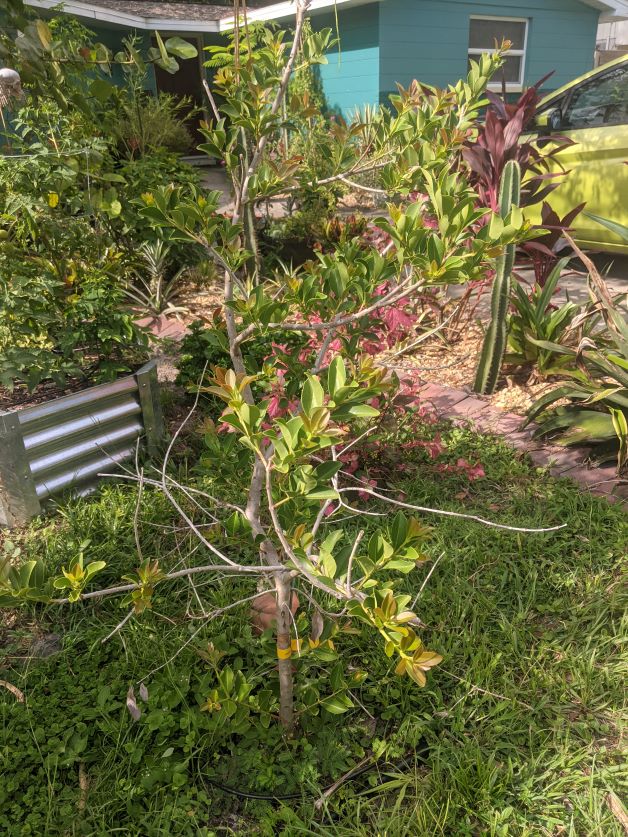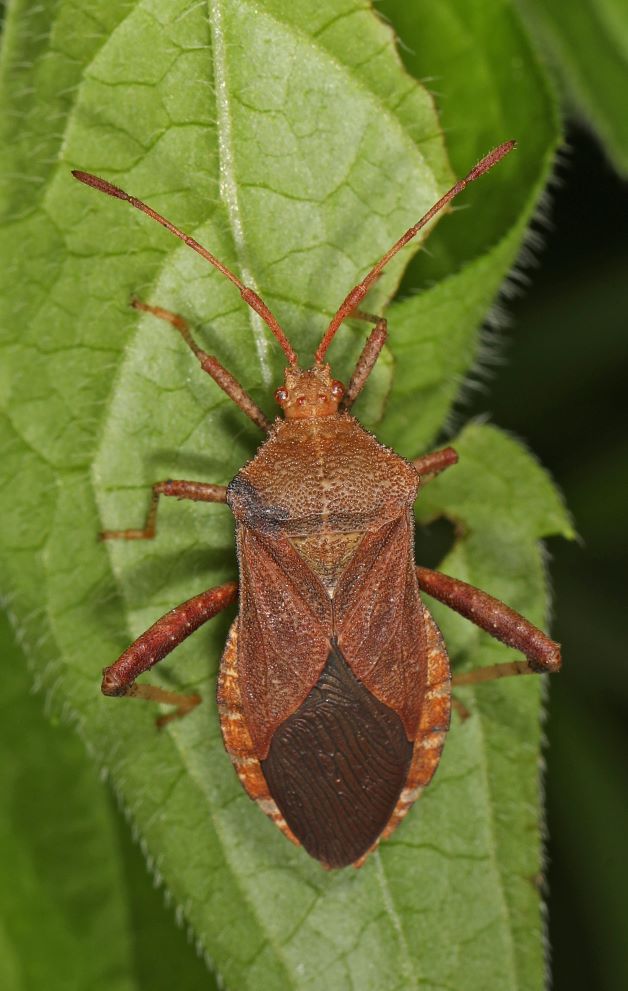Cockroach vs. Palmetto Bug
Have you ever heard someone say “Don’t worry – that’s a palmetto bug, not a cockroach.”? I know I have. You might be surprised to learn that palmetto bugs are cockroaches. Learn why some people think there’s a difference between a cockroach vs. palmetto bug in this creepy, crawly article.
Warning: you’re about to see some large, HD photos of different cockroach species in Florida. Some people may find this revolting, but I think it’s important to include for identification purposes. Also, remember: we’re in the cockroaches’ territory, not the other way around. Cockroaches have been around for 320 million years. Yes, cockroaches are creepy…but the Earth is as much their home as it is ours.
Are Palmetto Bugs Cockroaches?
What some southerners call palmetto bugs are usually 1 of 3 cockroach species, the Florida woods cockroach (Eurycotis flordana), the American cockroach (Periplaneta americana), or the smokybrown cockroach (periplaneta fuliginosa).
It’s human nature to be embarrassed to find a cockroach in or around your house. Cockroaches are gross. When you live in a subtropical or tropical climate, though, it’s inevitable. We are in their territory, not the other way around.
Florida cockroaches, American cockroaches, and smokybrown cockroaches all find safety in the palmetto tree, especially in dead palmetto leaves. This fact, along with the embarrassment of finding a cockroach in your home, is what leads people to call these species palmetto bugs instead of cockroaches. It’s just more palatable to call them a palmetto bug, psychologically speaking.
When you hear stories about gigantic cockroaches in Florida, these are what people refer to as “palmetto bugs.”
What Cockroaches are in Florida?
Florida woods cockroach (Eurycotis floridana)
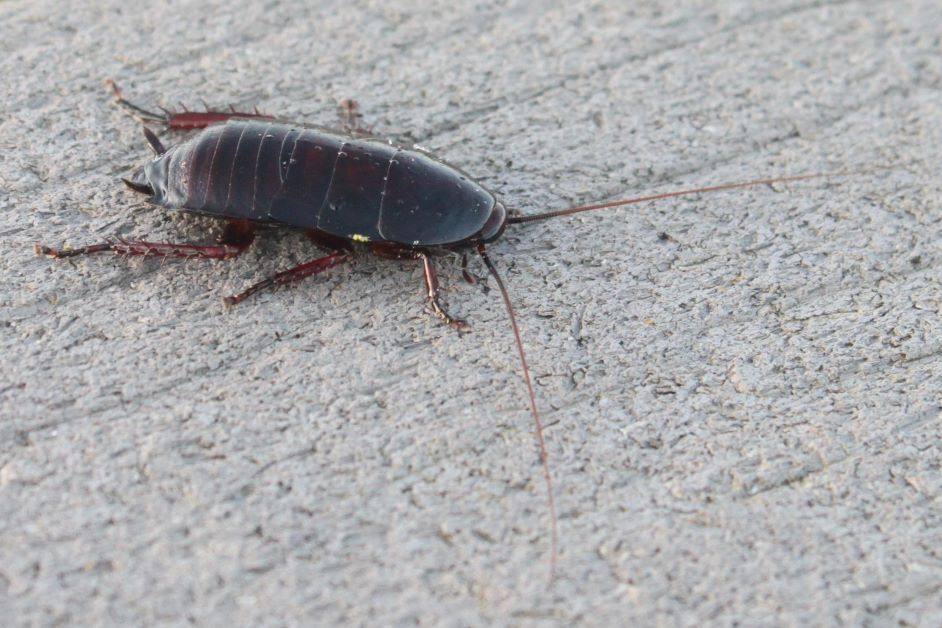
- Average size: 1.2 to 1.6 inches long and up to 1 inch wide
- Habitat: warm, damp, dark locations; leaf litter and rotting wood; inside greenhouses and Florida rooms; in palmetto plants; prefers the outdoors
- Food source: organic material like decaying plant matter and rotting wood
- Can the Florida woods cockroach fly: no. The Florida woods cockroach has wings but can’t fly
- Other common names: palmetto bug, skunk roach, stinkroach, Florida cockroach, stinking cockroach
Not-so-fun fact! The Florida woods cockroach sprays a nasty odor when threatened. That’s why they have so many foul-sounding common names. They’re also the biggest cockroach species in Florida.
American cockroach (Periplaneta americana)
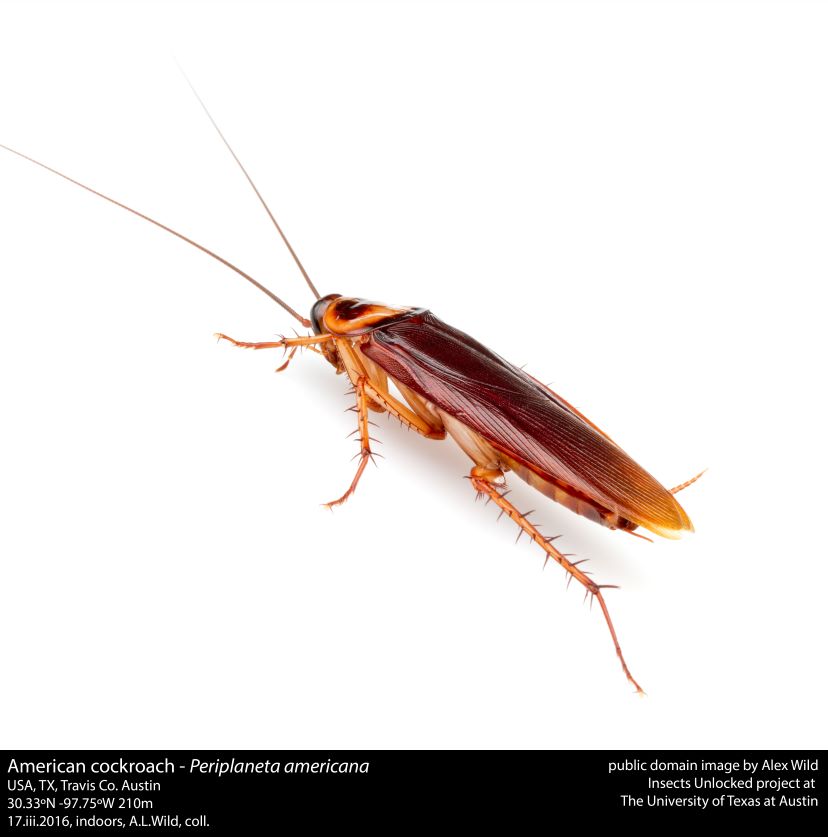
- Average size: 1.4 to 2.1 inches long
- Habitat: warm, damp, dark locations; leaf litter and rotting wood; garbage; found indoors and outdoors; when indoors, found in water pipes and bathrooms
- Food source: almost anything – decaying plant matter, sweets, fats, paper, hair, books, dead animals and insects
- Can the American cockroach fly: yes, adult American cockroaches can fly a short distance
- Other common names: palmetto bug, waterbug, ship cockroach
Not-so-fun-fact! Out of all the common cockroaches, the American cockroach has the longest lifecycle at 700 days.
Smokybrown cockroach (Periplaneta fuliginosa)
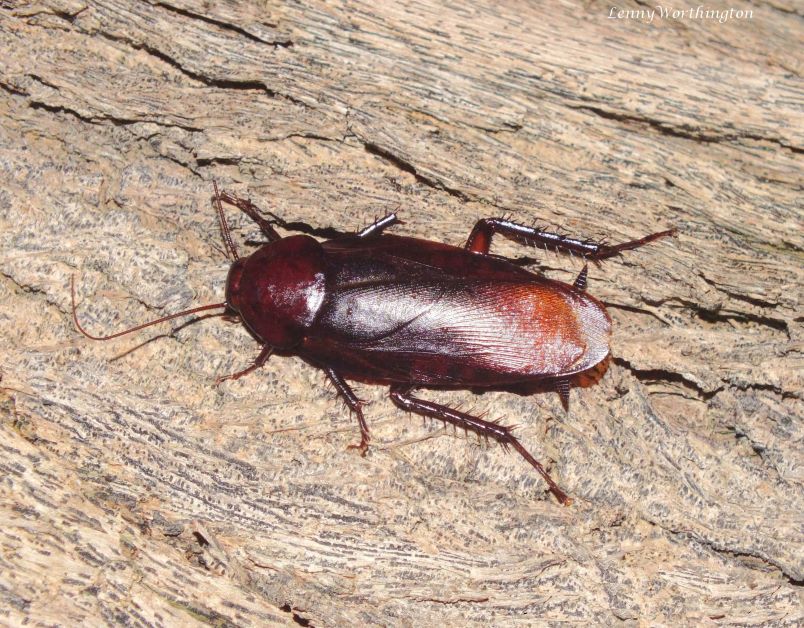
- Average size: 1.25 to 1.4 inches long
- Habitat: garbage; sewers; gardens; usually outdoors but will come inside when the weather is cool or very hot and dry; when indoors, found in kitchens, bathrooms, and attics
- Food source: almost anything – decaying plant matter, dog and cat food, paper, fruit
- Can the smokybrown cockroach fly: yes, adult smokybrown cockroaches can fly
- Other common names: palmetto bug
Not-so-fun-fact! Unlike some other species of cockroach, the smokybrown is attracted to light. This can lead them to venture indoors.
Brown cockroach (Periplaneta brunnea)
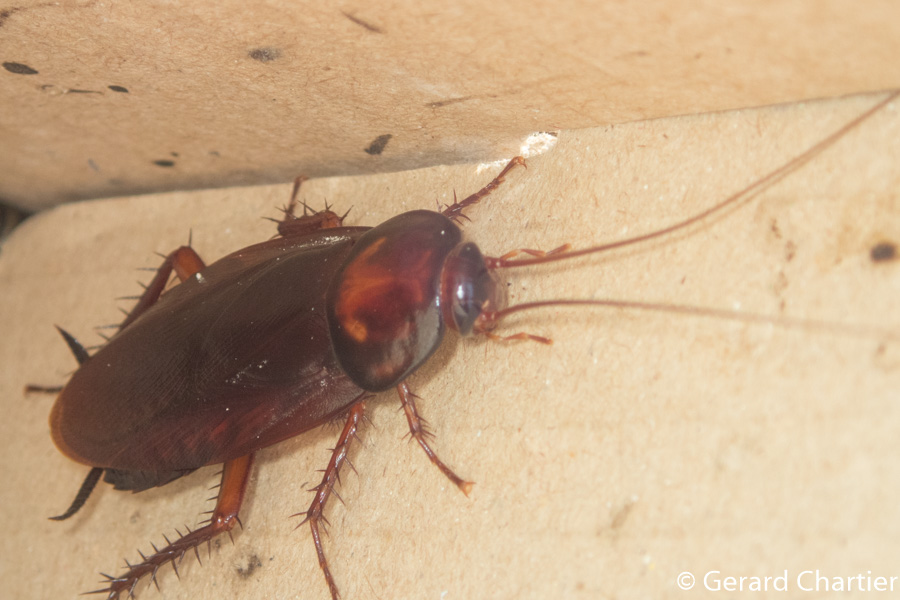
- Average size: up to 1.6 inches long
- Habitat: indoors and outdoors; when indoors, look in drainpipes and basements; when outdoors, look under debris and in sewers
- Food source: human food; animal and human feces; organic matter
- Can the brown cockroach fly: yes, adult brown cockroaches can fly
- Other common names: southern brown cockroach
Not-so-fun-fact! The brown cockroach is more common in southern states and it was first introduced to California in 1969. A family moved from Texas to Los Angeles, and the brown cockroaches hitched a ride in their belongings.
Australian cockroach (Periplaneta australasiae)

- Average size: 1 to 1.5 inches long
- Habitat: usually outdoors; under leaf litter and piles of wood; when found indoors, look in drainpipes, bathrooms, and cupboards
- Food source: decaying plant matter; human food with high starch content
- Can the Australian cockroach fly: yes, adults Australian cockroaches can fly
- Other common names: waterbug, shad roach
Not-so-fun-fact! Half of all asthma sufferers are allergic to cockroaches, including the Australian cockroach.
German cockroach (Blattella germanica)

- Average size: .4 to .6 inches long
- Habitat: German cockroaches are strictly an indoor species and are spread from place to place by human activity; look under refrigerators, in cupboards, and in bathrooms. This is the species that is most often found in commercial kitchens and homes.
- Food source: anything – food waste, garbage, pet food, paper, meat, sweets
- Can the German cockroach fly: no
- Other common names: croton bug
Not-so-fun-fact! The German cockroach may be called the croton bug, but it’s not named after the popular Florida plant. The croton bug name refers to the first indoor plumbing sewer system in New York, which was called the Croton Reservoir. The Croton Reservoir helped the German cockroach spread far and wide in the city in 1842.
Asian cockroach (Blattella asahinai)
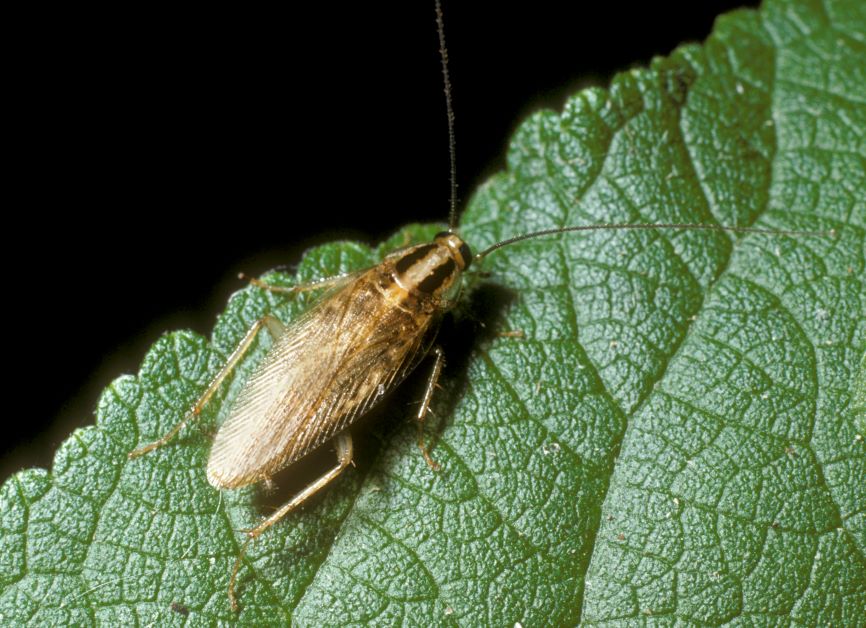
- Average size: .5 to .6 inches long
- Habitat: found indoors but prefers outdoors; when outdoors, look in shady areas, under mulch and leaf litter; when indoors, they are attracted to light so look on TV screens, white walls, on lampshades
- Food source: anything – live plants, dead plants, human food, pet food, garbage
- Can the Asian cockroach fly: yes, adult Asian cockroaches can fly
- Other common names: n/a
Not-so-fun-fact! The first Asian cockroach in North America was found in 1986 in Kathleen, FL.
How Bad Are Cockroaches in Florida?
Florida is in the top 10 when it comes to cockroaches in the United States, but we’re lower on the list than you may have guessed. According to Excel Pest Services, Florida is #8 in the country when it comes to cockroach population.
Broken down by city, however, Miami grabs the #3 spot for cockroaches based on a study done by the American Housing Survey.
Featured Image Photo Credit: Dinesh Valke

